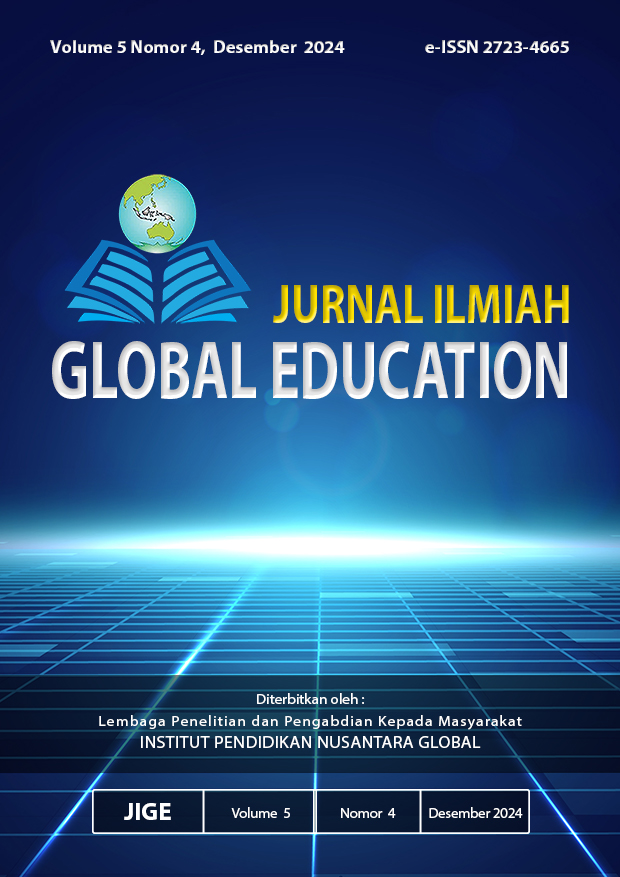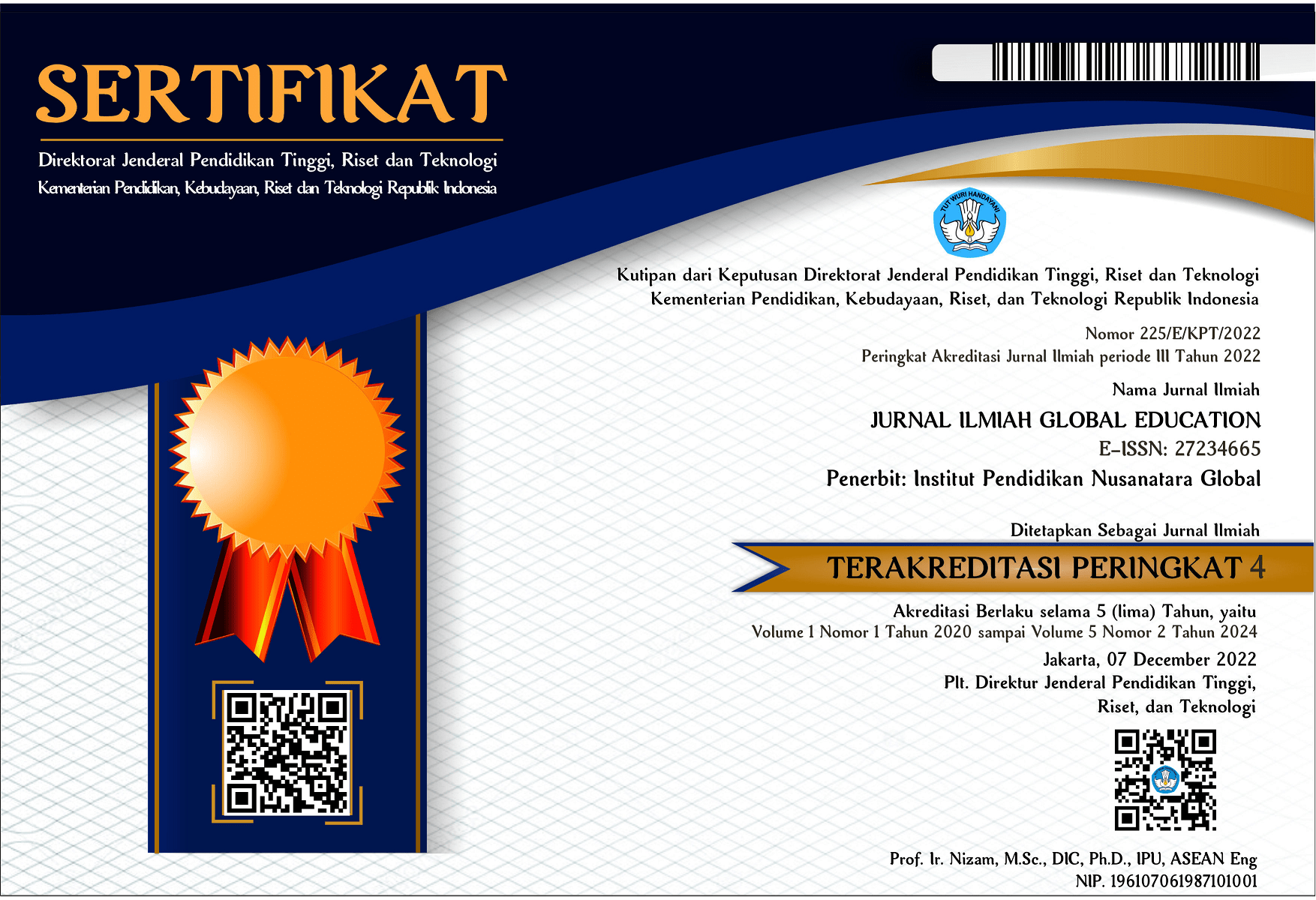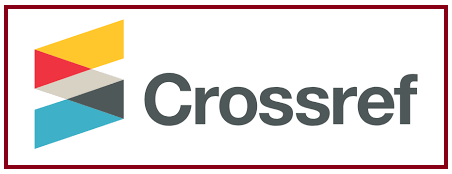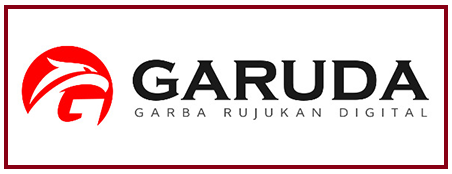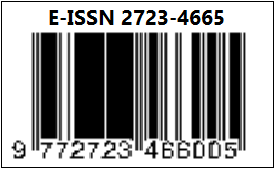Analysis of the Influence of Customer Experience, Facility Innovation, and Digital Marketing on Customer Satisfaction in Padma Hotel Bandung
DOI:
https://doi.org/10.55681/jige.v5i4.3688Keywords:
customer experience, facility innovation, digital marketing, customer satisfaction, hospitality industryAbstract
The hotel industry is a cornerstone of the hospitality sector, facing intense competition driven by evolving guest expectations and technological advancements. As customer satisfaction plays a pivotal role in determining guest loyalty and long-term profitability, hoteliers increasingly adopt strategies that enhance the guest experience, innovate facilities, and leverage digital marketing. This research aims to analyze the influence of customer experience, facility innovation, and digital marketing on customer satisfaction in the hotel industry. This study used quantitative methods to collect data from 160 hotel guests through surveys and analyzed the findings using the PLS-SEM analysis tool. The sampling technique employed purposive sampling with the criteria of guests who had stayed at Padma Hotel Bandung and had used the facilities and services provided by the hotel. Selected guests had to meet certain criteria: they were at least 18 years old, had stayed at the hotel for more than one night, and had interacted with the hotel’s digital facilities and other innovations. The results reveal that customer experience, facility innovation, and digital marketing significantly impact customer satisfaction, with customer experience emerging as the most dominant factor. While facility innovation and digital marketing contribute positively, their effects are less pronounced compared to customer experience. These findings underscore the need for hotels to prioritize investments in guest experiences, modernize facilities, and implement effective digital marketing strategies to enhance customer satisfaction. The novelty of this research lies in its integrated approach to examining these three key factors simultaneously, addressing gaps in prior studies. By offering new insights into their collective influence, this research contributes to the development of comprehensive strategies aimed at boosting customer satisfaction and retention in the competitive hotel industry.
Downloads
References
Anderson, E. W., Fornell, C., & Lehmann, D. R. (1994). Customer satisfaction, market share, and profitability: Findings from Sweden. Journal of Marketing, 58(3), 53–66.
Apriliani, D. U., Kartika, S. E., & Nadiya, A. A. (2023). Pengaruh Digital Marketing, Kualitas Produk Dan Pelayanan Terhadap Kepuasaan Konsumen Batrisyia Herbal. Solusi, 21(1), 470–479.
Bitner, M. J. (1992). Servicescapes: The impact of physical surroundings on customers and employees. Journal of Marketing, 56(2), 57–71.
Buhalis, D., & Law, R. (2008). Progress in information technology and tourism management: 20 years on and 10 years after the Internet—The state of eTourism research. Tourism Management, 29(4), 609–623.
Chaffey, D., & Ellis-Chadwick, F. (2019). Digital marketing: Strategy, implementation, and practice (7th ed.). Pearson.
Creswell, J. W. (2014). Research design: Qualitative, quantitative, and mixed methods approaches (4th ed.). SAGE.
Duffett, R. G. (2017). Influence of social media marketing communications on young consumers’ attitudes. Young Consumers, 18(1), 19–39.
Gentile, C., Spiller, N., & Noci, G. (2007). How to sustain the customer experience: An overview of experience components that co-create value with the customer. European Management Journal, 25(5), 395–410.
Hair, J. F., Black, W. C., Babin, B. J., & Anderson, R. E. (2019). Multivariate data analysis (8th ed.). Cengage.
Han, H., & Ryu, K. (2009). The roles of the physical environment, price perception, and customer satisfaction in determining customer loyalty. Journal of Hospitality & Tourism Research, 33(4), 487–510.
Jabbour, C. J. C., Sarkis, J., & de Sousa Jabbour, A. B. L. (2021). Unlocking green innovation in hotel management: Implications for customer satisfaction. Journal of Cleaner Production, 279, 123456.
Kim, J. H., & Choi, J. G. (2013). The effect of hotel facility attributes on customer satisfaction and loyalty. International Journal of Hospitality Management, 34, 1–10.
Kim, W. G., & Ok, C. M. (2010). Customer orientation of service employees and rapport: Influences on service-outcome variables in full-service restaurants. Journal of Hospitality & Tourism Research, 34(1), 34–55.
Klaus, P., & Maklan, S. (2013). Towards a better measure of customer experience. International Journal of Market Research, 55(2), 227–246.
Kotler, P., & Keller, K. L. (2016). Marketing management (15th ed.). Pearson.
Leung, D., Xue, L., & Bai, B. (2021). The impact of digital marketing on customer engagement in the hospitality industry. Journal of Hospitality and Tourism Technology, 12(2), 231–247.
Lemon, K. N., & Verhoef, P. C. (2016). Understanding customer experience throughout the customer journey. Journal of Marketing, 80(6), 69–96.
Malhotra, N. K. (2010). Marketing research: An applied orientation (6th ed.). Pearson.
Morrison, A. M. (2019). Hospitality and travel marketing (5th ed.). Delmar Cengage Learning.
Mody, M. A., Suess, C., & Lehto, X. (2020). The accommodation experiencescape: A comparative assessment of hotels and Airbnb. Journal of Hospitality & Tourism Research, 44(7), 1090–1115.
Parasuraman, A., Zeithaml, V. A., & Berry, L. L. (1988). SERVQUAL: A multiple-item scale for measuring consumer perceptions of service quality. Journal of Retailing, 64(1), 12–40.
Pine, B. J., & Gilmore, J. H. (1999). The experience economy: Work is theatre & every business a stage. Harvard Business School Press.
Schultz, D. E., & Peltier, J. J. (2013). Social media's slippery slope: Challenges, opportunities, and future research directions. Journal of Research in Interactive Marketing, 7(2), 86–99.
Sekaran, U., & Bougie, R. (2023). Research methods for business: A skill-building approach (8th ed.). Wiley.
Simanjuntak, D. C. Y., & Purba, P. Y. (2020). Peran mediasi customer satisfaction dalam customer experience dan loyalitas pelanggan. Jurnal Bisnis Dan Manajemen, 7(2).
Sugiyono. (2021). Metode penelitian kuantitatif, kualitatif, dan R&D. Alfabeta.
Syahfitri, A., Nasution, Z., & Hanum, F. (2023). Analysis of the influence of price, quality of service, facilities and location on customer satisfaction at Cafe Dapur Kampung, Marbau District. Daengku: Journal of Humanities and Social Sciences Innovation, 3(3), 476–483.
Verhoef, P. C., Lemon, K. N., & Parasuraman, A. (2009). Customer experience creation: Determinants, dynamics, and management strategies. Journal of Retailing, 85(1), 31–41.
Zhang, Z., Ye, Q., Law, R., & Li, Y. (2020). The impact of hotel facility innovations on guest satisfaction: A study based on online review mining. Journal of Hospitality and Tourism Technology, 11(3), 512–528.
Zeithaml, V. A., Bitner, M. J., & Gremler, D. D. (2018). Services marketing: Integrating customer focus across the firm (7th ed.). McGraw-Hill.
Downloads
Published
How to Cite
Issue
Section
License
Copyright (c) 2024 Johanes Octovianus, Juliana, Meitolo Hulu

This work is licensed under a Creative Commons Attribution-ShareAlike 4.0 International License.

